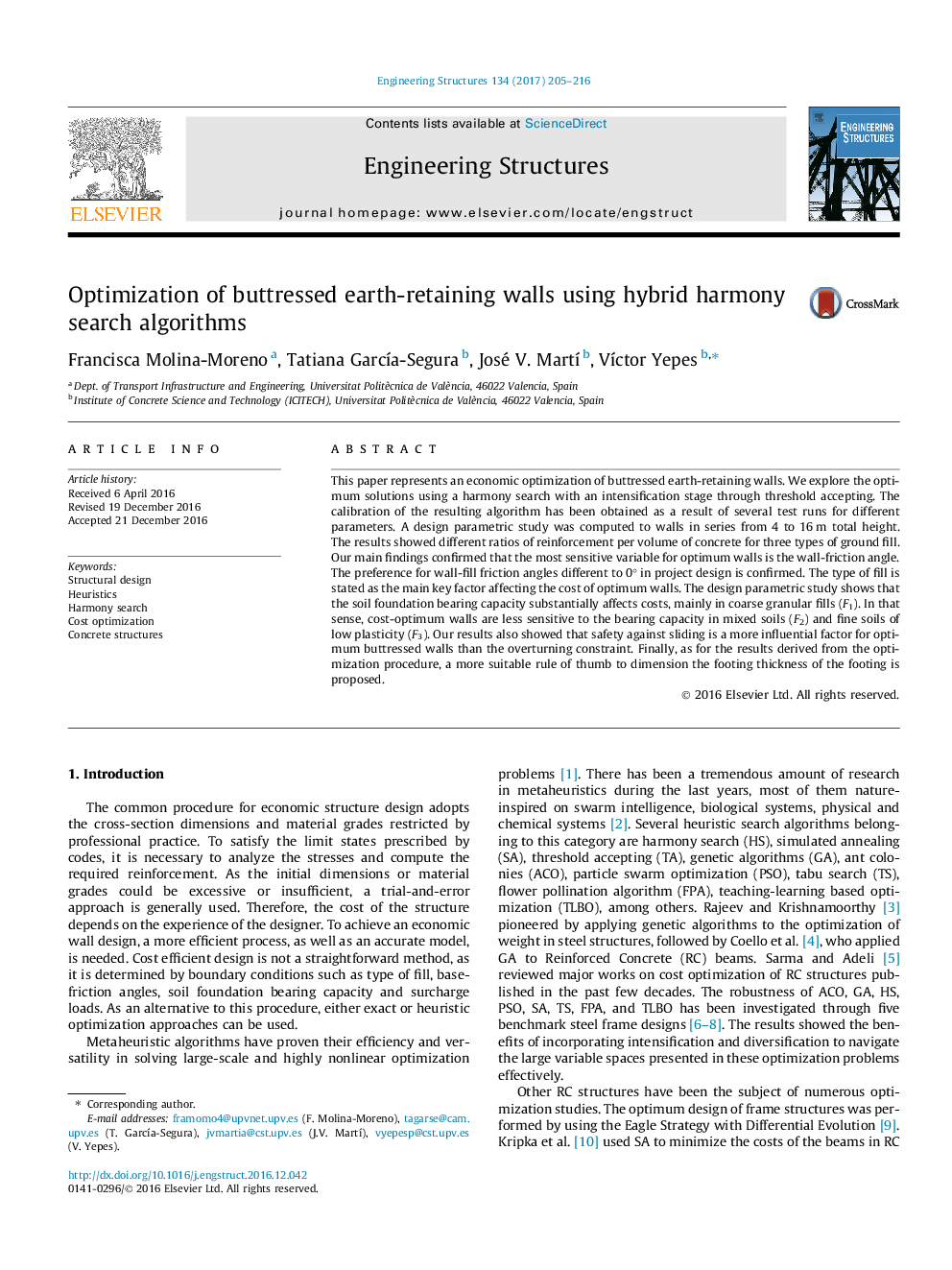| Article ID | Journal | Published Year | Pages | File Type |
|---|---|---|---|---|
| 4920399 | Engineering Structures | 2017 | 12 Pages |
Abstract
This paper represents an economic optimization of buttressed earth-retaining walls. We explore the optimum solutions using a harmony search with an intensification stage through threshold accepting. The calibration of the resulting algorithm has been obtained as a result of several test runs for different parameters. A design parametric study was computed to walls in series from 4 to 16 m total height. The results showed different ratios of reinforcement per volume of concrete for three types of ground fill. Our main findings confirmed that the most sensitive variable for optimum walls is the wall-friction angle. The preference for wall-fill friction angles different to 0° in project design is confirmed. The type of fill is stated as the main key factor affecting the cost of optimum walls. The design parametric study shows that the soil foundation bearing capacity substantially affects costs, mainly in coarse granular fills (F1). In that sense, cost-optimum walls are less sensitive to the bearing capacity in mixed soils (F2) and fine soils of low plasticity (F3). Our results also showed that safety against sliding is a more influential factor for optimum buttressed walls than the overturning constraint. Finally, as for the results derived from the optimization procedure, a more suitable rule of thumb to dimension the footing thickness of the footing is proposed.
Related Topics
Physical Sciences and Engineering
Earth and Planetary Sciences
Geotechnical Engineering and Engineering Geology
Authors
Francisca Molina-Moreno, Tatiana GarcÃa-Segura, José V. MartÃ, VÃctor Yepes,
